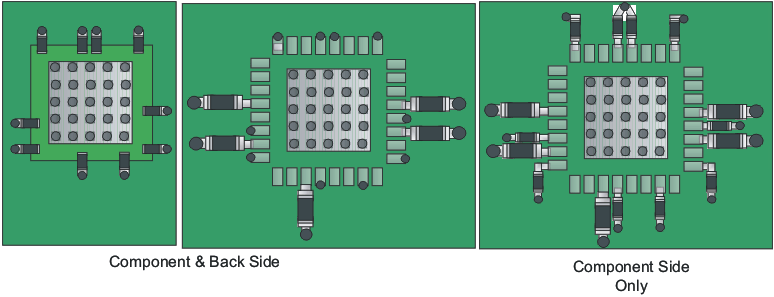SCAS882E June 2009 – October 2016 CDCE62002
PRODUCTION DATA.
- 1 Features
- 2 Applications
- 3 Description
- 4 Revision History
- 5 Description (continued)
- 6 Pin Configuration and Functions
- 7 Specifications
- 8 Parameter Measurement Information
-
9 Detailed Description
- 9.1 Overview
- 9.2 Functional Block Diagrams
- 9.3
Feature Description
- 9.3.1 Phase Noise Analysis
- 9.3.2 Output-to-Output Isolationthe OUTPUT TO OUTPUT ISOLATION section
- 9.3.3 Device Control
- 9.3.4 External Control Pins
- 9.3.5 Input Block
- 9.3.6 Lock Detect
- 9.3.7 Crystal Input Interface
- 9.3.8 VCO Calibration
- 9.3.9 Start-Up Time Estimation
- 9.4 Device Functional Modes
- 9.5 Programming
- 9.6 Register Maps
- 10Power Supply Recommendations
- 11Layout
- 12Device and Documentation Support
- 13Mechanical, Packaging, and Orderable Information
Package Options
Mechanical Data (Package|Pins)
- RHB|32
Thermal pad, mechanical data (Package|Pins)
- RHB|32
Orderable Information
11 Layout
11.1 Layout Guidelines
Figure 38 shows a conceptual layout focusing on power supply bypass capacitor placement. If the capacitors are mounted on the back side, 0402 components can be employed; however, soldering to the thermal dissipation pad can be difficult. If the capacitors are mounted on the component side, 0201 components must be used to facilitate signal routing. In either case, the connections between the capacitor and the power supply terminal on the device must be kept as short as possible.
11.2 Layout Example
 Figure 38. CDCE62002 Power Supply Bypassing
Figure 38. CDCE62002 Power Supply Bypassing